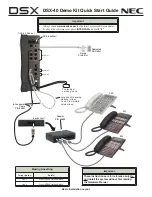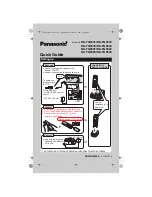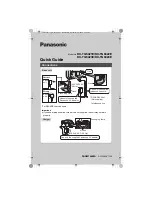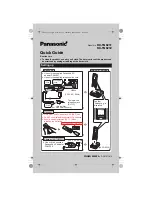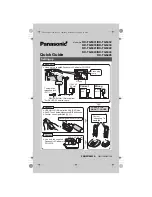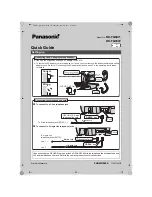
TOLL RESTRICTION TABLE CONFIGURATION
Before programming the toll restriction configuration, enter the toll restriction requirements on the programming reference tables found at the end of this
procedure.
In order for toll restriction to take effect, the following three-fold process must occur.
l
One or more toll tables must be entered
l
Toll tables must be assigned to
appropriate lines.
l
Toll tables must be assigned to all appropriate stations.
the toll tables are programmed, they must then be assigned to both a line and a station using that line before any programmed toll restriction will be
activated at the station.
1. Determine the types of dialing restrictions which must be imposed on the system.
Typically, this includes access codes which result in toll charges,
and certain local numbers as desired.
2. If the restricted dialing codes will be imposed consistently on most or all stations in the system, list them on one or two tables.
If wide variation in the
dialing restrictions is planned, spread the listing out across several tables.
3 . Strategically group the listings on the tables so that a list of restrictions can be applied to a particular station or group of stations.
4 . Designate each table as a DENY table or as an ALLOW table. The numbers entered in a DENY table are prevented from being dialed. ALLOW
tables take precedence over DENY tables. Therefore, an entry in an allow table will provide an explicit exception to an entry in a DENY table. Note
that the system always permits the dialing of any number not explicitly denied. Also, system speed dial numbers will not be toll restricted unless
specified by station COS programming.
Example A: Provide a simple and broad toll restriction format by creating a DENY table with two entries:
l
ENTRY (1)
ENTRY (2) = 0. This format prevents all long distance and operator calls.
Example
Prevent the dialing of all numbers within the (804) area code, while allowing the dialing of one specific number within that area code. by
entering 1804 in a DENY table and 18049782200 in an ALLOW table.
Press the # button in place of a particular digit to condense a range of numbers into one entry.
The # character is a “match-anything” digit, and can
be included in an entry in either a DENY table or an ALLOW table.
Example A: If
and 397 dialing is to be prohibited, list one entry of
on a DENY table to cover them all.
Example B: Since area codes typically have a 1 or a 0 as a middle digit, prevent long distance calls to those area codes by entering
and
in an DENY table.
8. Since it is important that emergency numbers never be restricted, always create an allow table with entries of 911 and 1911 to override any DENY
tables that have been created.
7. If the system is installed behind a PBX, include an access code as part of every table entry.
Summary of Contents for DIGITECH
Page 13: ...System Overview l 6 ...
Page 14: ..._ d33 System Overview J 0 I r0 0 0 t 0 0 0 0 0 0 0 0 0 l 7 ...
Page 41: ...IMI 66 083 Table 3 2 J l Statlon Connections 4 Line Station Base Unit SPARE PORTS ...
Page 47: ...IMI 66 083 Installat ...
Page 55: ...IMI66 083 Installat llllllilliiiiiliiiil5 TTTTTTITTTTTTTTTTTTT 1111111111111111111 E 3 21 ...
Page 62: ...installation IMI 66 083 Figure 3 16 Software Cartridge lnstallatlon and Removal 3 28 ...
Page 106: ...System hogramming IMI 66 083 STATION LINECONFIGURATIONRECORD ...
Page 110: ......
Page 111: ......
Page 112: ......
Page 113: ......
Page 137: ...LAST RESORT TABLE I U L COST T U 1 31TME 1 RATE q 2 RATF ICHARGE R2RATF 1 1 SURCHARGE 1 I ...
Page 138: ...COST TABLE 20 I SURCHARGE I 2 RATF SURCHARGE ...
Page 146: ...SYSTEM SPEED DIAL RECORD ...
Page 181: ...Sjlstem Gperation IMI 66 083 ...



































